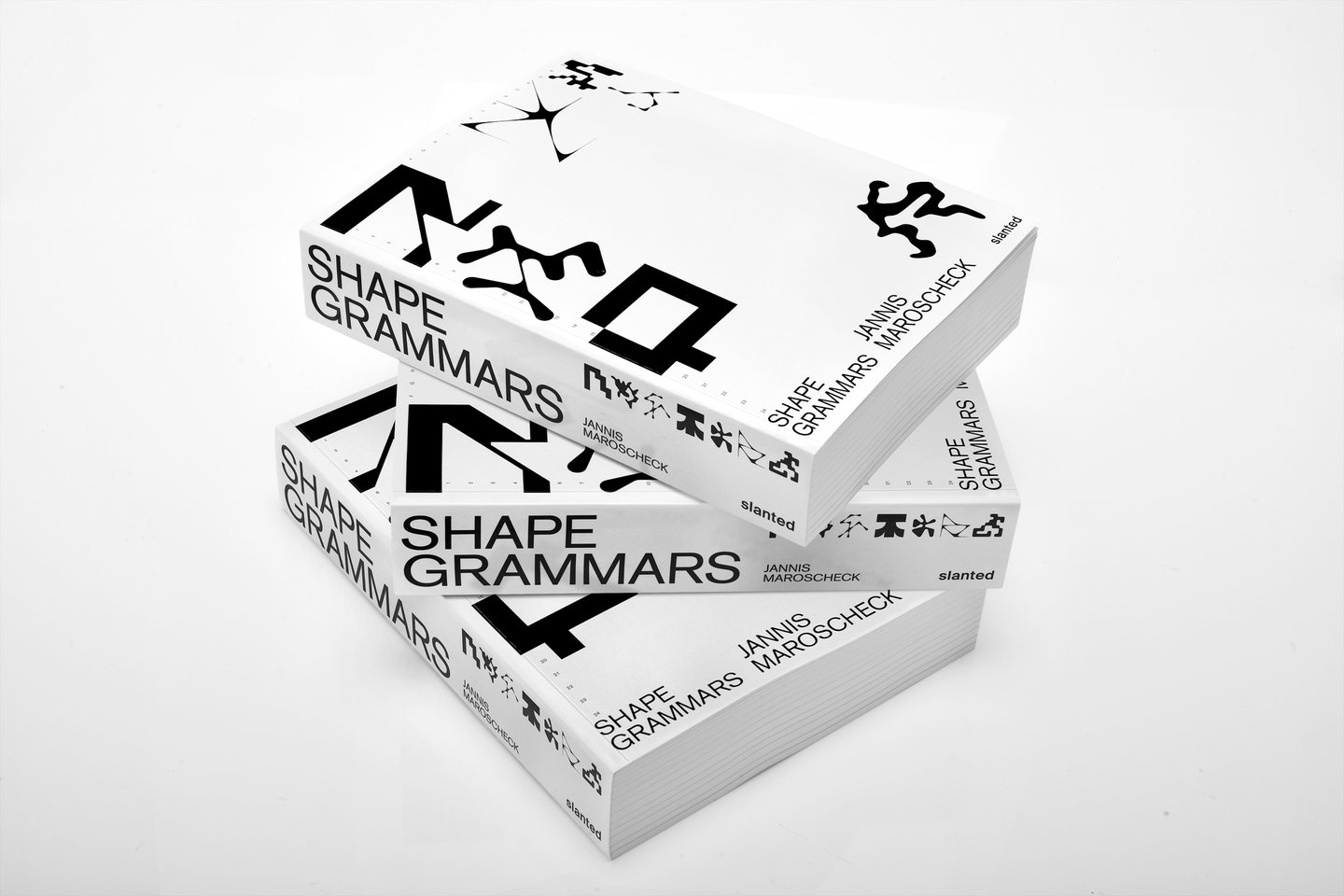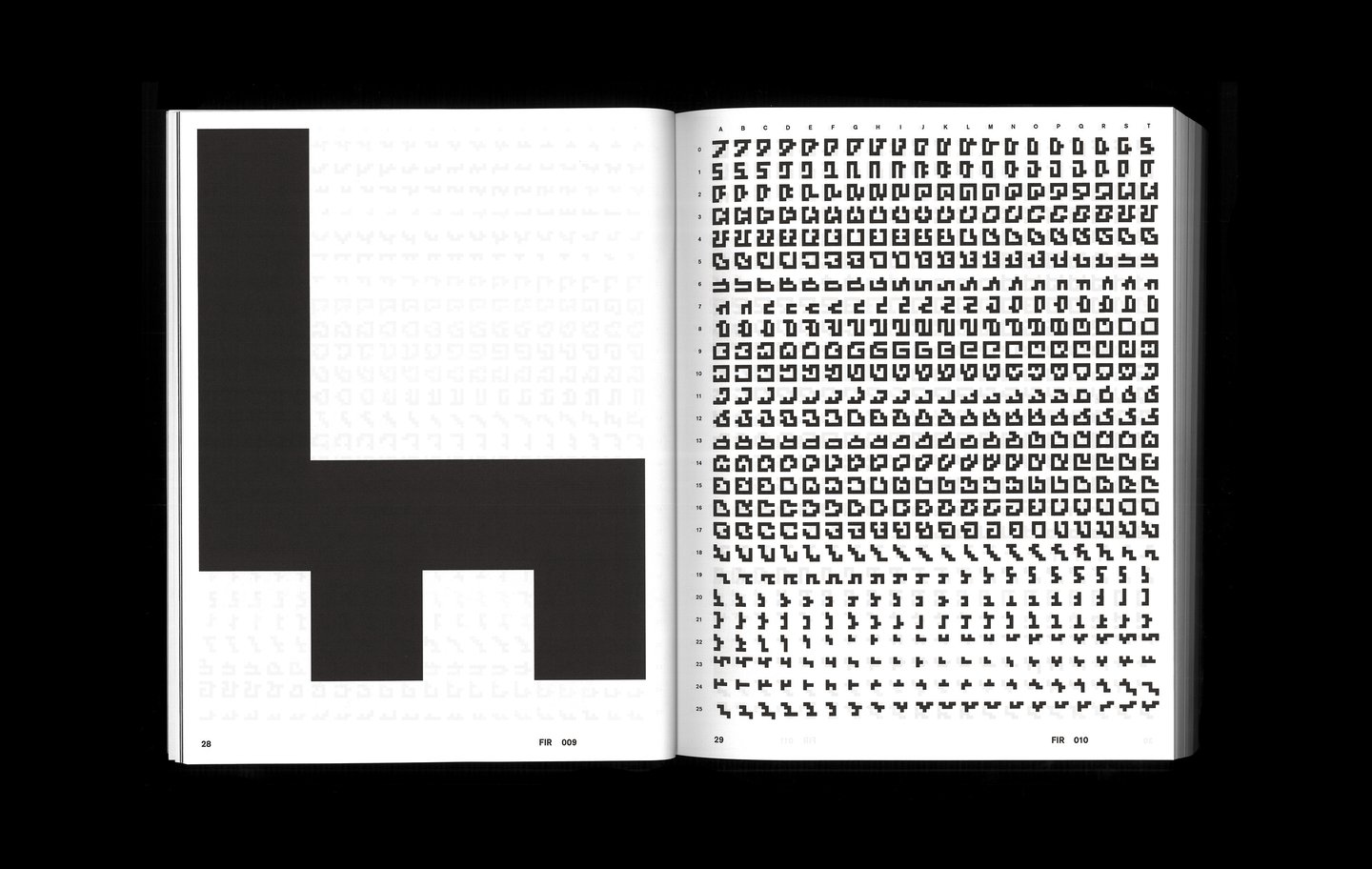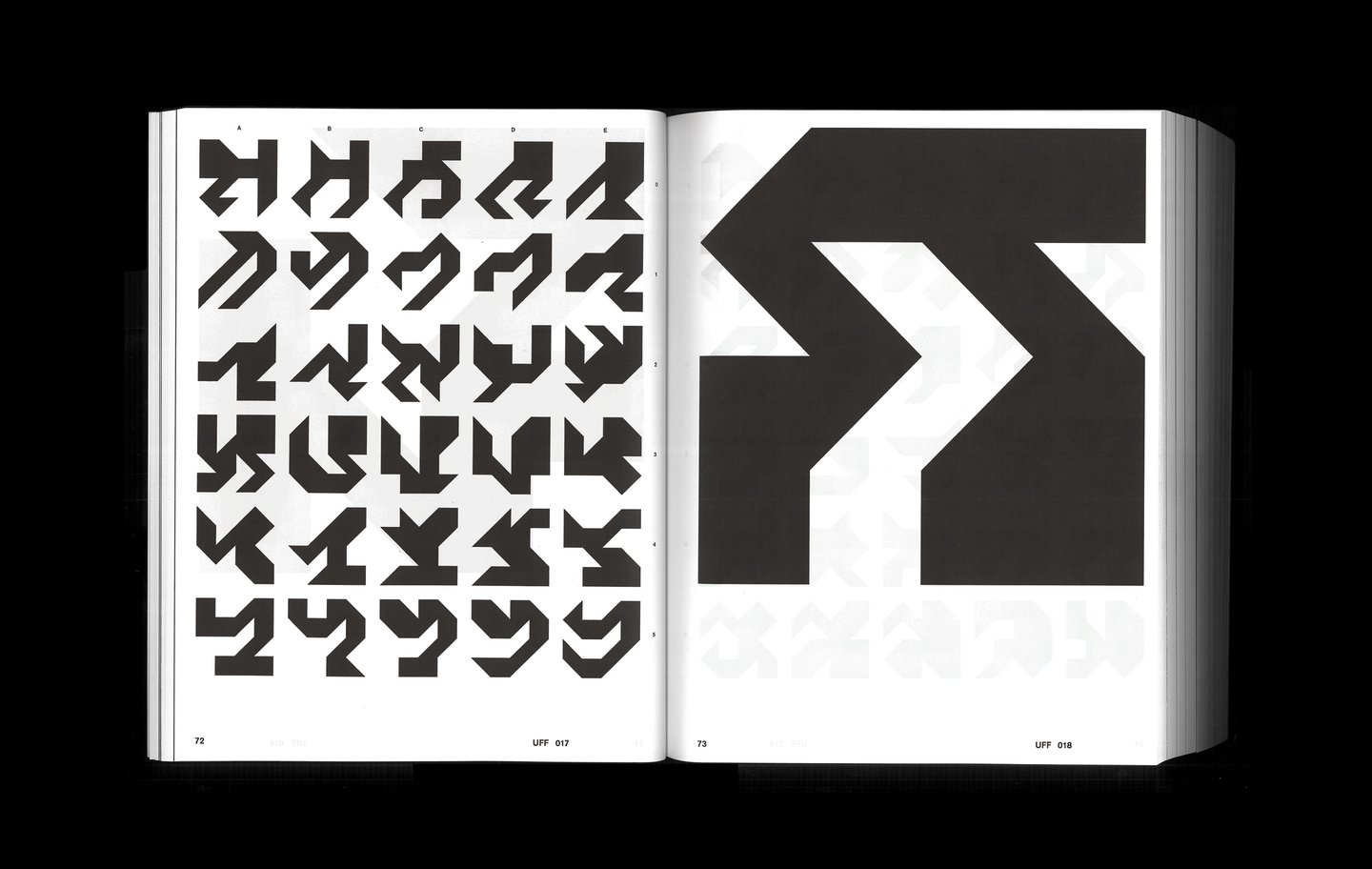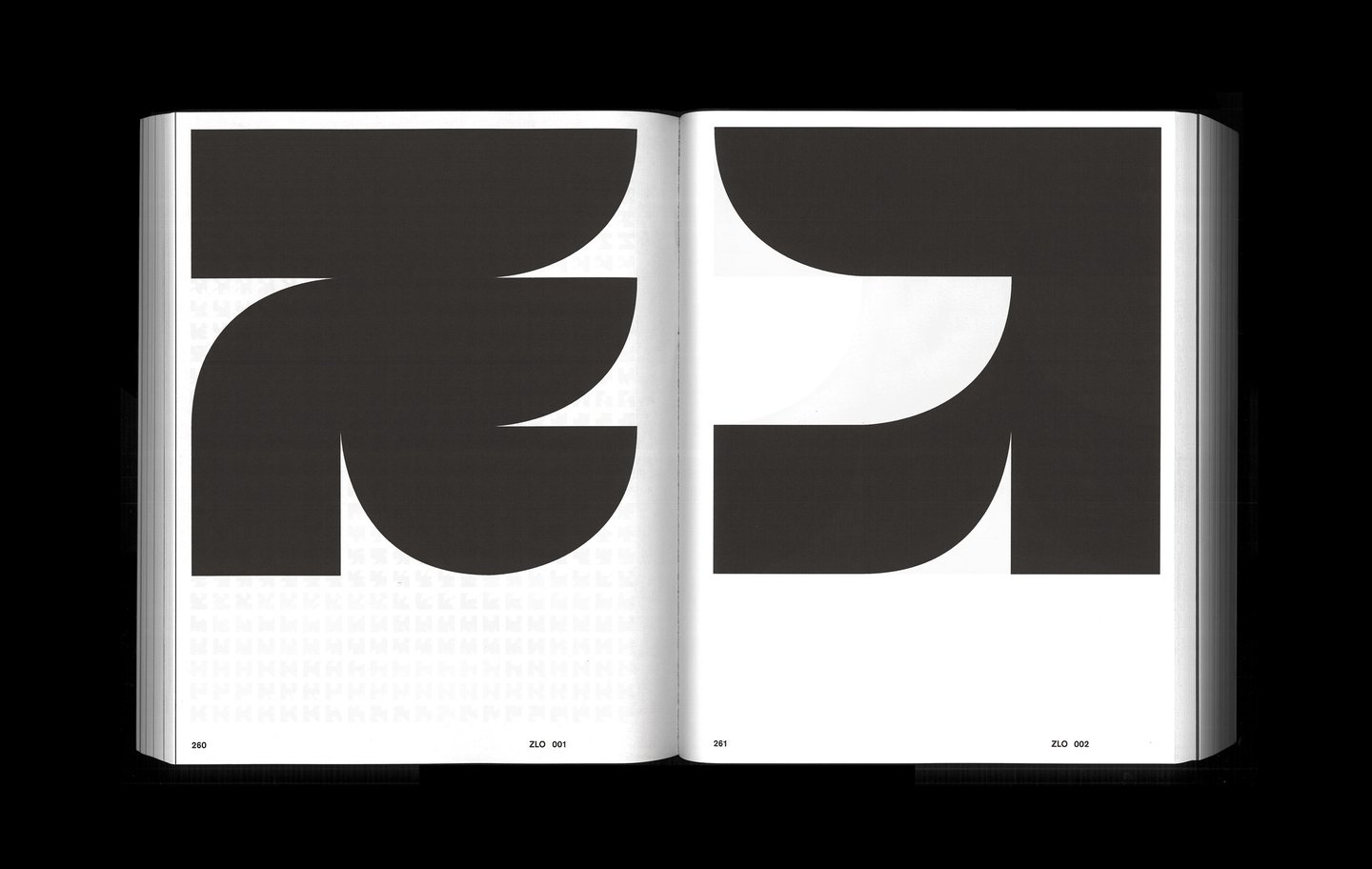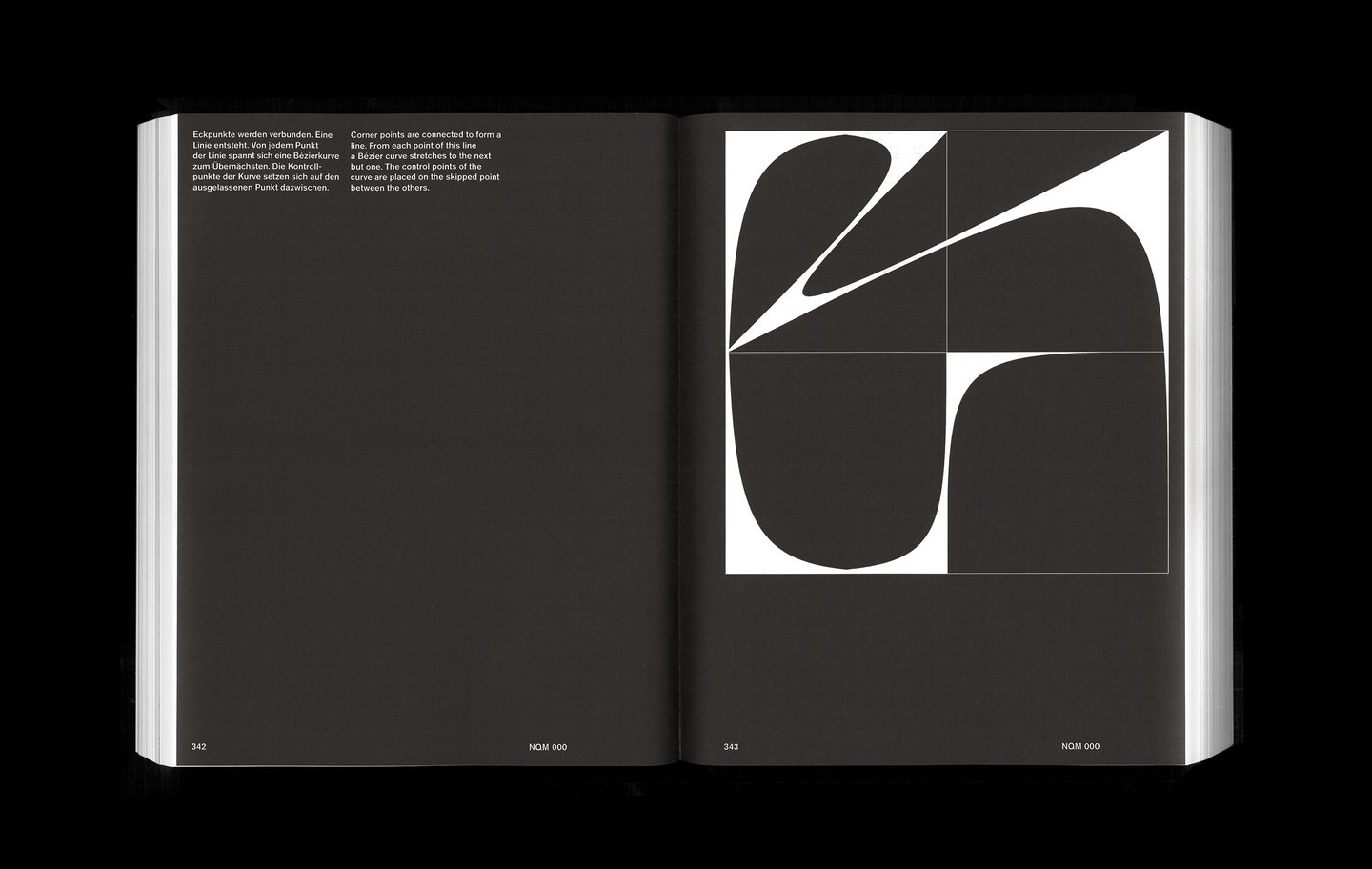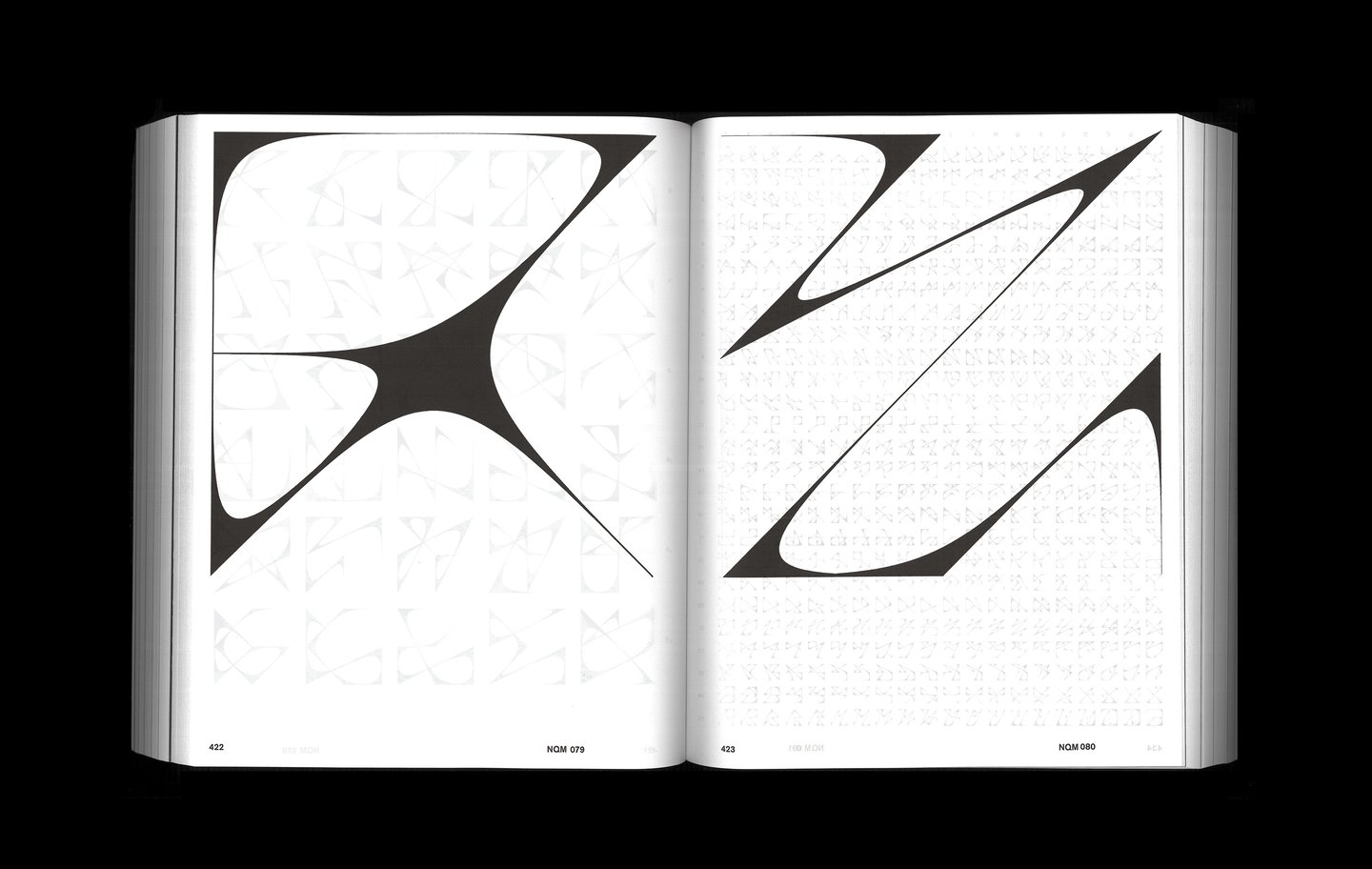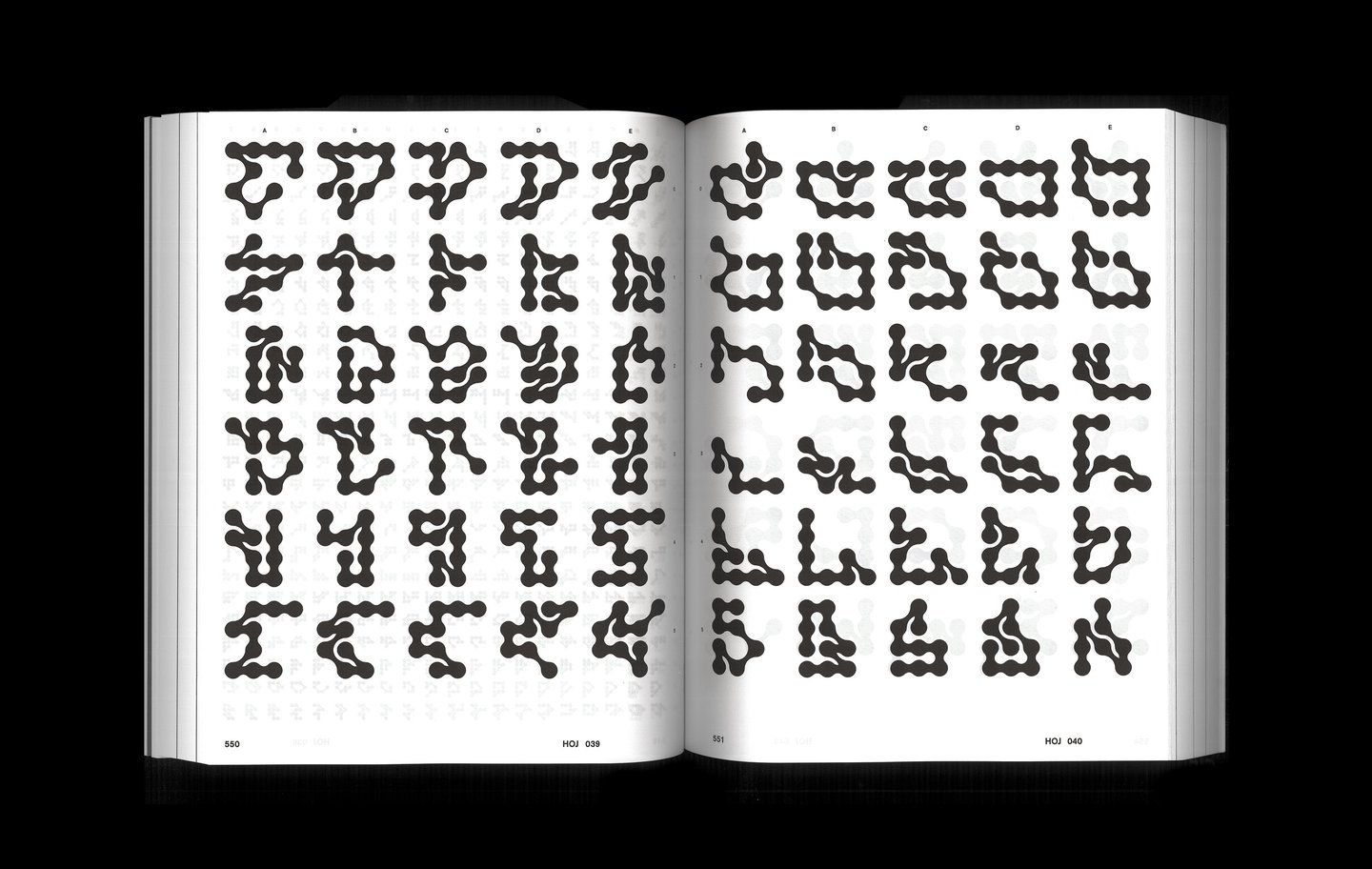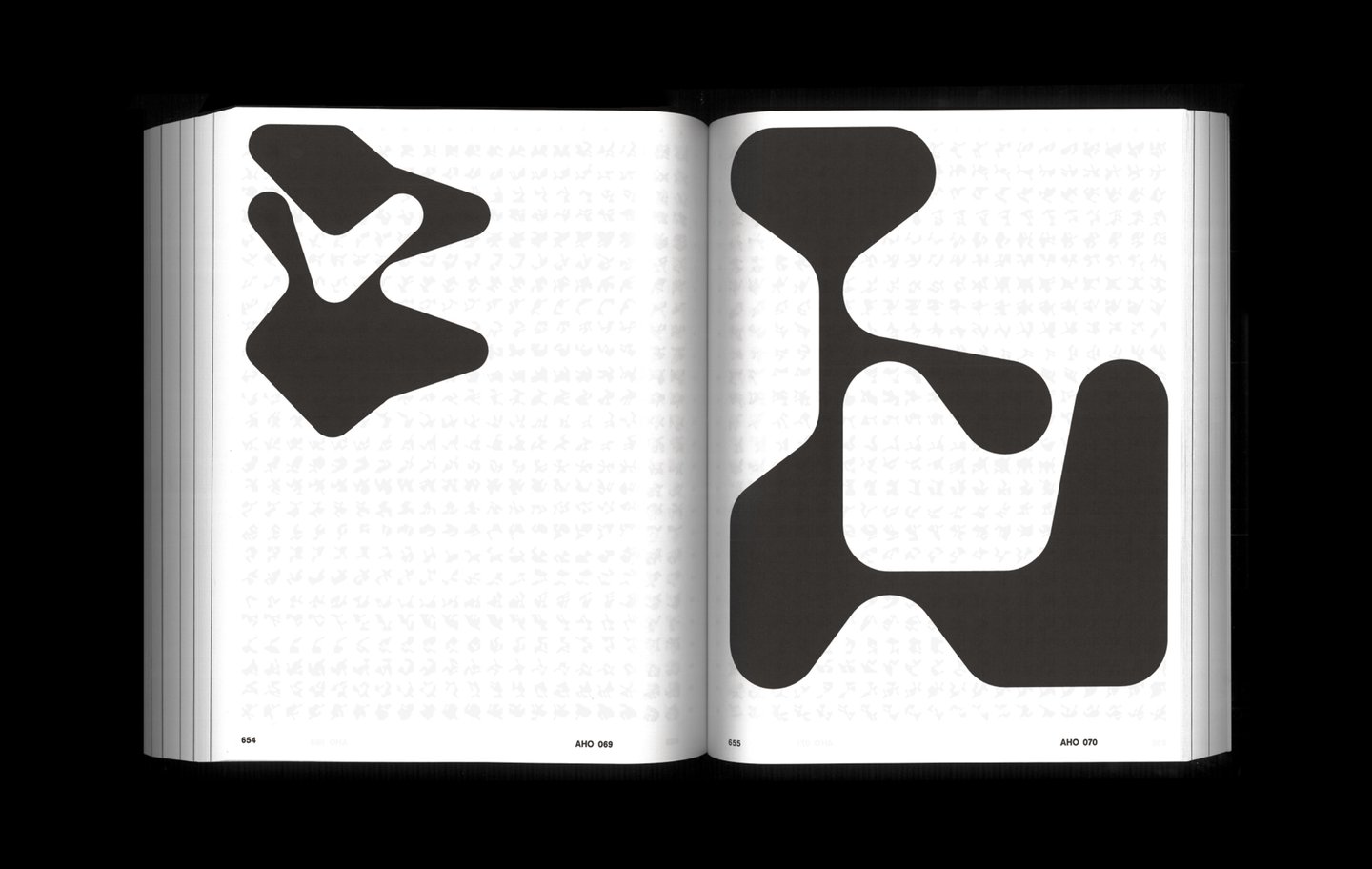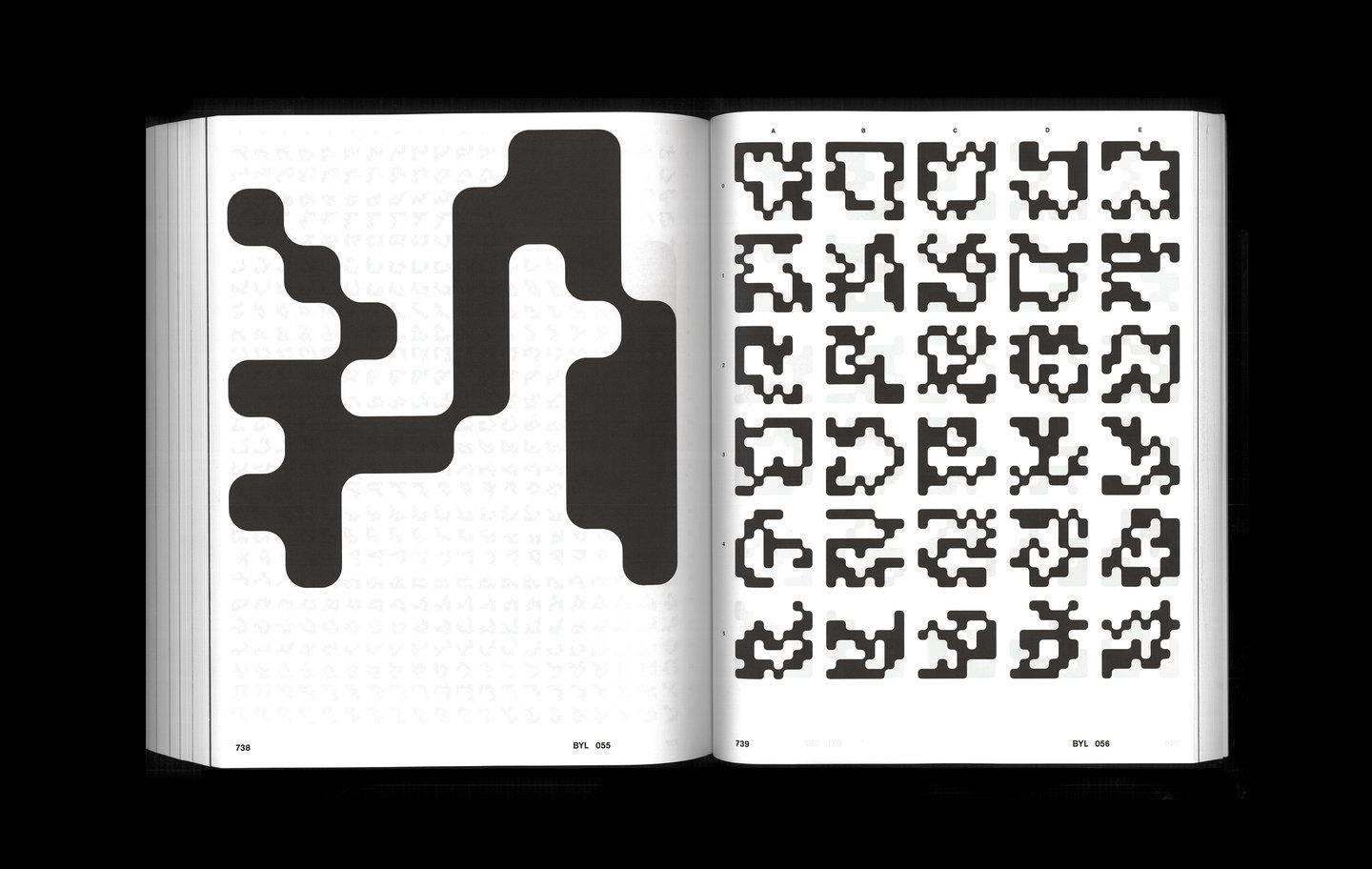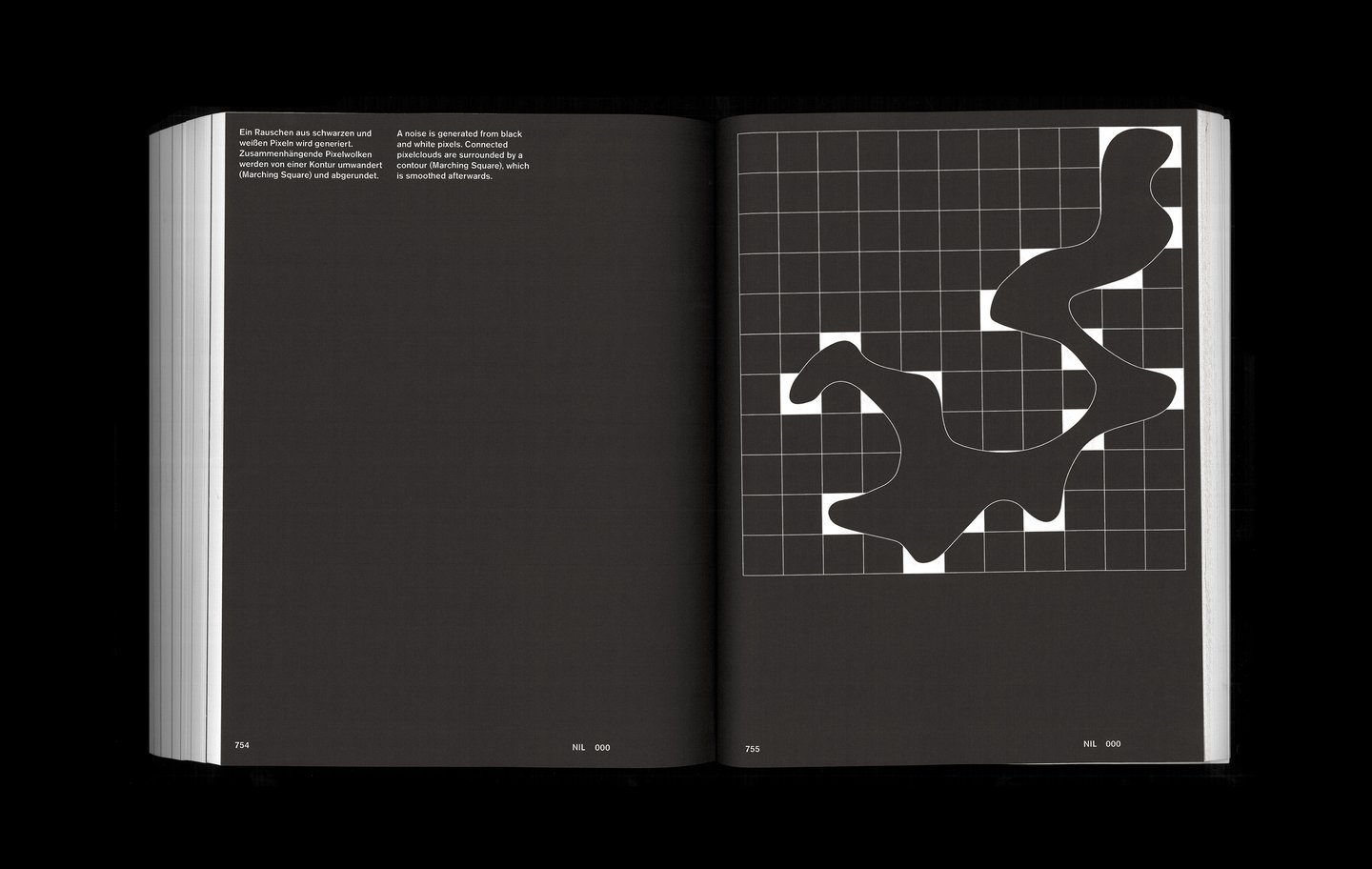A peek into an AI-driven world, Shape Grammars by Jannis Maroscheck is a dictionary of 150,000 shapes and systems
How
can generative design create something less generic? In response, the
German graphic designer has built a hefty 836-page study into the
automation of design.
A dictionary of graphic systems, Jannis Maroscheck’s new book Shape Grammars, published by Slanted,
needn’t be too complex. The German designer, currently studying at the
University of Arts in Tokyo, has always sought out to create something –
so much so that he calls these creations “short-term obsessions”, where
he tends to get bored quite easily and moves onto the next idea. He
comes from a “rational numbers guy” father and “aesthetically driven”
mother, which means he places himself somewhere right in the middle.
Software is his inspiration and, for Shape Grammars specifically, the works of Sol LeWitt and Norm have been key players for the “big sparks”. So while quarantining in a small fisherman's village in the south east part of Nagasaki, Jannis recalls the moment when the emergency state for all of Japan was announced. “Hence, I had a lot of time,” he tells It’s Nice that. “I sent some emails with a 100 page preview of Shape Grammars attached. Slanted like it. From there, everything went pretty quickly.”
When asked about the publication’s description and motives, Jannis’ answer is that he simply wanted to make a “big book with lots of pages and minimum effort”. In the ideation process, it was after he completed a project in his third semester that the spark for Shape Grammars was lit – “and then it just grew”. The thought of building a dictionary of shapes, “a catalogue for growing and exploring geometric systems” came into fruition, alongside the goal of putting something out there that would allow the audience to constantly discover something new. “So, I collected these forms and their formulas, sorted from the strict geometric to the organic freeform.”
Jannis goes on to cite Noam Chomsky and his testament to formalising all sorts of languages that “obey some rules”. A relevant citation because, in Jannis’ work, he has similarly attempted to do as such with graphical systems. “Of course, this could never be completed, but at least I wanted to try to cover as large a spectrum of geometric principles as I could.” The result of such an immense project is a 836-page study into automation in design, which shows around 150,000 shapes that are produced by 12 systems. “What becomes visible is that the computer is quick at drawing. It can design 100,000 shapes in a couple of minutes,” he says, explaining that on the contrary the machine is mindlessly executing a ruleset with some random variation. “It is limited; it can never escape a system’s given logic.”
Software is his inspiration and, for Shape Grammars specifically, the works of Sol LeWitt and Norm have been key players for the “big sparks”. So while quarantining in a small fisherman's village in the south east part of Nagasaki, Jannis recalls the moment when the emergency state for all of Japan was announced. “Hence, I had a lot of time,” he tells It’s Nice that. “I sent some emails with a 100 page preview of Shape Grammars attached. Slanted like it. From there, everything went pretty quickly.”
When asked about the publication’s description and motives, Jannis’ answer is that he simply wanted to make a “big book with lots of pages and minimum effort”. In the ideation process, it was after he completed a project in his third semester that the spark for Shape Grammars was lit – “and then it just grew”. The thought of building a dictionary of shapes, “a catalogue for growing and exploring geometric systems” came into fruition, alongside the goal of putting something out there that would allow the audience to constantly discover something new. “So, I collected these forms and their formulas, sorted from the strict geometric to the organic freeform.”
Jannis goes on to cite Noam Chomsky and his testament to formalising all sorts of languages that “obey some rules”. A relevant citation because, in Jannis’ work, he has similarly attempted to do as such with graphical systems. “Of course, this could never be completed, but at least I wanted to try to cover as large a spectrum of geometric principles as I could.” The result of such an immense project is a 836-page study into automation in design, which shows around 150,000 shapes that are produced by 12 systems. “What becomes visible is that the computer is quick at drawing. It can design 100,000 shapes in a couple of minutes,” he says, explaining that on the contrary the machine is mindlessly executing a ruleset with some random variation. “It is limited; it can never escape a system’s given logic.”
GalleryJannis Maroscheck: Shape Grammars
The
notion of art, machines and creativity has been a longwinded one, yet
it’s something that’s ever more prevalent in today’s AI-infused world.
For Jannis, he says that this issue with limitation could be cured by
neural networks, which might be a way of “giving the computer more
interpretative freedom.” It’s the reasoning behind the “soulless and
generic” design that perpetuates the current landscape, and also why
there isn’t a “universal design machine” yet to be made. But, in the
future years to come, Jannis is convinced that we will start to see more
of these tools popping up and trying to break down creative work into
“fragments” and automatisation. Shape Grammers, of course, is an example of this, and poses this very question: how can generative design create something less generic?
One step towards answering this can rest in the fact that some might see a difference between an artist and designer, whereby the roles are distinctively laid apart from each other. “This might be healthy in an educational sense, however it irritated me sometimes [at university]. I like the meaningless and the excessive.” With the educational system’s reminder for creating work with meaning, Jannis felt that his role as a designer wasn’t meant to follow any “poetic motivations”. He adds: “so I decided to hide them behind technical stuff. Maybe I even forgot them there, but in hindsight they made me make this book.”
Having spent more time working on paper than on the screen, the outcome of Shape Grammars is highly engineered to make the computer do all of the work. “Unlike working with humans, there is no room for vague interpretation,” he explains. “You have to be crystal clear about everything or nothing will happen. But once you can formulate the rules of a system, you can automate the production.” For this publication specifically, Jannis has devised and written 14 small-scale programmes.
Primitive, concrete and built to be transformed, the shapes found within this book’s hefty pages are indeed born out of a digital world. So is this perhaps a small glimpse into the future and what is yet to come? Is this the end of originality and conscious thought? Either way, the result of Jannis’ study is here to be used and appreciated for their forms. “Some of them are pretty much ready to use as logos, pictograms or letterforms that don’t care about legibility,” he concludes, “but I think there is more potential in using them as a source of inspiration.”
One step towards answering this can rest in the fact that some might see a difference between an artist and designer, whereby the roles are distinctively laid apart from each other. “This might be healthy in an educational sense, however it irritated me sometimes [at university]. I like the meaningless and the excessive.” With the educational system’s reminder for creating work with meaning, Jannis felt that his role as a designer wasn’t meant to follow any “poetic motivations”. He adds: “so I decided to hide them behind technical stuff. Maybe I even forgot them there, but in hindsight they made me make this book.”
Having spent more time working on paper than on the screen, the outcome of Shape Grammars is highly engineered to make the computer do all of the work. “Unlike working with humans, there is no room for vague interpretation,” he explains. “You have to be crystal clear about everything or nothing will happen. But once you can formulate the rules of a system, you can automate the production.” For this publication specifically, Jannis has devised and written 14 small-scale programmes.
Primitive, concrete and built to be transformed, the shapes found within this book’s hefty pages are indeed born out of a digital world. So is this perhaps a small glimpse into the future and what is yet to come? Is this the end of originality and conscious thought? Either way, the result of Jannis’ study is here to be used and appreciated for their forms. “Some of them are pretty much ready to use as logos, pictograms or letterforms that don’t care about legibility,” he concludes, “but I think there is more potential in using them as a source of inspiration.”
GalleryJannis Maroscheck: Shape Grammars
Share Article
Further Info
About the Author
—
Ayla
was an editorial assistant back in June 2017 and continued to work with
us on a freelance basis. In November 2019 she joined the team again,
working with us as a Staff Writer on Mondays and Tuesdays. She's
contactable on aa@itsnicethat.com.
View more from

